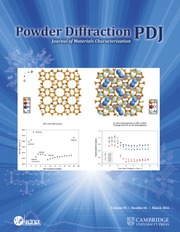No CrossRef data available.
Article contents
Method development of quantitative chemical state analysis by X-ray emission spectroscopy for lithium-ion battery materials
Published online by Cambridge University Press: 13 June 2025
Abstract
We studied the spectral analysis of X-ray emission spectroscopy for lithium-ion battery materials during the disproportionation reaction driven by heat treatment. To improve the quantitative analysis of chemical states, we consider the contribution of unstable chemical states in the peak deconvolution. We first applied a linear combination fitting (LCF) to the residuals, assuming an asymmetric Lorentzian peak, which was obtained for the unstable chemical component. Since LCF requires a set of known spectra for peak deconvolution, we develop the LCF for spectral analysis, including unknown chemical states. Both quantification results show a similar trend in the temperature dependence of the heat treatment. With the latter method, we can quantify the samples, including unknown chemical compounds, even when that compound does not have a known X-ray emission spectrum.
Keywords
Information
- Type
- Proceedings Paper
- Information
- Copyright
- © The Author(s), 2025. Published by Cambridge University Press on behalf of International Centre for Diffraction Data


